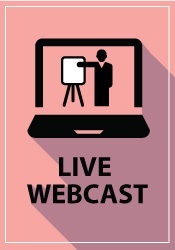

Rewiring the Brain for Better Recovery
More and more, people are coming through our doors for treatment post-stroke. However, we find ourselves torn between promoting “recovery” and the reality of ever-decreasing rehab length of stays, which force us to focus on function alone. This pressure can cause us to resort to quick fixes or shortcuts that may help in the short-term, but may not have proper evidence for long-term recovery. Stroke rehab is not a quick fix. The fact is that we are increasingly pressured to provide evidence that our interventions are working (can someone say G Codes!). The critical necessity for rehabilitation professionals to act decisively, responsibly, and effectively with this growing population cannot be overstated.
Get the roadmap to stroke rehab that actually leads to recovery in this impactful one-day course. During the course. You will discuss common impairments seen in stroke (e.g., apraxia, neglect, pusher syndrome) and the interventions based on current principles of neuroplasticity to treat these impairments. Evidence-based treatments of the hemiparetic/hemiplegic upper and lower extremities after stroke will be covered as well. By the end of the course, you will walk away with the tools and resources needed to effectively improve outcomes for your stroke patients.
Course Content
MOTOR LEARNING AND NEUROPLASTICITY
COMMON STROKE RELATED IMPAIRMENTS WITH SPECIFIC TREATMENT METHODS
OUTCOME MEASURES
STRENGTH RECOVERY AFTER STROKE
TACKLING OF UPPER AND LOWER EXTREMITY PARESES (CASE STUDY ICON)
CLINICAL REASONING
FITT PRINCIPLE
CLINCIAL REASONING (CASE STUDY ICON)
SUMMARIZATION AND SYNCHRONIZATION
| File type | File name | Number of pages | |
|---|---|---|---|
| Course Manual_Neuroplasticity and Stroke Rehab: A Roadmap to Functional Recovery (0.80 MB) | Available after Purchase |
BENJAMIN WHITE, PT, DPT, C/NDT, serves as the lead Neurological Physical Therapist for an acute care and outpatient setting. His primary daily duties include servicing patients of neurological diagnoses including stroke, brain injury and Parkinson's. He is also a certified Neurodevelopmental Treatment (NDT) practitioner specializing in stroke and brain injury care, and serves on the NDT publication committee, aiding fellow team members in the production of publications that outline proper care of the neurological patient. Dr. White also serves as a Clinical instructor to the DPT student population. He is a published author through the NDT Association highlighting budding research on how neuroplasticity can in fact occur in all patients post stroke across the continuum. Dr. White has previously served as the hospital's falls committee chair and now helps lead a local Parkinson's Association. He is certified in Lee Silverman Voice Treatment (LSVT) BIG servicing this patient population with evidenced based medicine and a return to their desired level of function.
Disclosure:
Financial – Receives a speaking honorarium from Vyne Education
Nonfinancial – No relevant nonfinancial relationship exists
Please note: There will be a lunch and two 15-minute breaks; one in the morning and one in the afternoon. Lunch and break times will be announced by the speaker and at their discretion.
| 5 |
|
| 4 |
|
| 3 |
|
| 2 |
|
| 1 |
|
Satisfaction Guarantee
Your satisfaction is our goal and our guarantee. Concerns should be addressed to: PO Box 1000, Eau Claire, WI 54702-1000 or call 1-800-844-8260.
ADA Needs
We would be happy to accommodate your ADA needs; please call our Customer Service Department for more information at 1-800-844-8260.
Please wait ...